High-Altitude Trekking in Nepal: Comparing Manaslu, Everest, and Annapurna in 2026 and Beyond

Introduction: Nepal’s Timeless Trails, a Future-Focused Experience
When you picture trekking in Nepal, you probably see prayer flags snapping in the wind, yaks on stone paths, and horizons serrated by 8,000-meter giants. That picture still holds true—but the experience is evolving. In the mid-2020s, high altitude trekking Nepal is entering a new chapter: better trail maintenance, more resilient bridges, improved tea houses and safety standards, clearer permit systems, and a rising traveler commitment to sustainability.
Among the Himalayan trekking routes, three destinations dominate dream lists: the Manaslu Circuit Trek, the Everest Base Camp Trek, and the Annapurna Circuit & Annapurna Base Camp Trek. Each offers a distinct blend of altitude, culture, scenery, challenge, and comfort. If you’re planning for Manaslu trekking 2026, Everest trekking 2026, Annapurna trekking 2026, or looking ahead to trekking in Nepal 2027, this guide compares the regions in depth and helps you choose the right adventure.
Why Choose High-Altitude Trekking in Nepal?
The Benefits
- Unmatched scenery: Glacier-carved valleys, knife-edge passes, and amphitheaters of ice lit by Himalayan sunrises.
- Culture in motion: Monasteries, mani walls, gompas, and village life unfold as you walk—Nepal adventure travel is a cultural immersion as much as a mountain journey.
- Personal transformation: Long days on trail simplify life to the essentials—walk, breathe, rest—and reward you with grit, humility, and focus.
- World-class infrastructure: Compared with other high mountain regions, Nepal’s lodge network, guiding standards, and logistics make advanced altitude accessible.
The Challenges
- Altitude stress: Reduced oxygen above ~3,000 m demands acclimatization, conservative pacing, and flexibility.
- Weather volatility: Snow, wind, and monsoon rain can reshape plans; shoulder seasons require backup days.
- Remoteness and commitment: Even with better roads and comms, you’re still far from urban services; solid Nepal trekking guide support, insurance, and contingency planning matter.
What Shapes Your Experience
- Altitude ceilings: Larkya La on Manaslu (~5,106 m), Kala Patthar (~5,545 m) vantage and base camp in Everest region, and Thorong La on Annapurna (~5,416 m) set the tone—higher, colder, slower.
- Terrain: From gorge-side cliff paths to moraine ramps and wind-scoured saddles.
- Remoteness: Manaslu remains the most regulated and quiet; Everest is the most connected; Annapurna offers variety and multiple access points.
Manaslu Trekking: The Mountain of the Spirit, Quiet Power
What Makes the Manaslu Circuit Unique
The Manaslu Circuit Trek wraps around the eighth-highest mountain, threading the Budhi Gandaki gorge before cresting Larkya La (≈5,106 m) into the Annapurna side. It feels raw and intimate: narrow trails, swinging bridges, stone villages, and Tibetan-influenced culture. The restricted-area framework caps casual influx and keeps the experience purposeful and respectful.
Signature highlights
- Cliff-hugging paths above a thundering river
- Village arcs—Lho, Samagaun, Samdo—where chortens and prayer flags frame Manaslu’s walls
- Larkya La’s slow, sweeping ascent and big-sky panorama
Best Season and Time to Trek
- Autumn (late Sep–Nov): Dry, stable, and crisp—peak views and lodge availability.
- Spring (Mar–May): Rhododendron bloom and longer daylight; lingering snow early season possible near the pass.
- Winter (Dec–Feb): Crystal air but serious cold and the possibility of pass closures—only for experienced teams.
- Monsoon (Jun–Aug): Lush but slippery with cloud-bound views; not ideal unless you’re set on solitude and cultural time.
(Seasonality aligns broadly with national high-altitude patterns and what agencies recommend for Manaslu and comparable Himalayan routes.)
Present Conditions (Trails, Accommodation, Permits)
- Trails & bridges: The route is open with rebuilt and maintained bridges on key sections, though landslide-prone spots can appear after heavy rains—local updates remain essential.
- Accommodation: Tea houses are simpler than in Everest or busy Annapurna hubs but improving with better insulation, solar, and water refill points.
- Permits & rules: You’ll need Manaslu Restricted Area Permit (RAP) plus MCAP and ACAP (because you exit into the Annapurna side). A licensed agency must issue restricted permits, and trekking the restricted segment requires a licensed guide; solo independent permits are not issued.
Note on TIMS & guides: Nepal’s revised rules (effective March 31, 2023) require a licensed guide and an agency-issued TIMS card on most routes; restricted areas like Manaslu already mandate agency handling and guides—confirm specifics with your outfitter close to your dates.
Culture, Traditions, and Geography
From mani walls to centuries-old gompas, Manaslu is steeped in Tibetan-influenced Buddhism. Daily village rhythms, yak pastures, and harvest seasons enrich the walk. Geographically, you trace a textbook transition from sub-tropical river gorge to subalpine scrub to glacial basins—then cross Larkya La to descend through moraines into forest again.
Outlook for 2026–2027
Expect incremental lodge upgrades, better wayfinding, and more refill points and waste segregation as conservation partners and local committees continue their work. Regulations will likely keep Manaslu quieter than mainstream circuits, preserving its “expedition-feel” for those who prefer wilder trekking in Nepal.
Everest Base Camp Trek: The Icon of Himalayan Dreams
Why EBC Captures the World
The Everest Base Camp Trek is the archetype of high altitude trekking Nepal—a narrative arc from forested Dudh Koshi crossings to the bustling amphitheater of Namche Bazaar, the incense-wreathed serenity of Tengboche Monastery, the lunar desolation of Gorakshep, and the sunrise pilgrimage to Kala Patthar for face-to-face moments with Everest and Nuptse.
Highlights
- Namche Bazaar: Sherpa capital, cafés, bakeries, gear shops, and stunning acclimatization hikes.
- Tengboche Monastery: Set on a promontory with 360° views and daily chants.
- Everest Base Camp: A rock-and-ice encampment at the foot of the Khumbu Icefall (no peak views here—those come from ridges).
- Kala Patthar (~5,545 m): The postcard viewpoint for sunrise alpenglow. (EBC season guidance commonly recommends late March–May and October–November for weather and views.)
Best Seasons & Practical Challenges
- Spring (late Mar–May): Stable weather, bright skies, climbing season activity.
- Autumn (Oct–Nov): Clear air and cool nights; peak demand.
- Winter: Quiet and bitterly cold; requires robust kit.
- Monsoon: Wet, clouded, and prone to delays—generally avoided.
Challenges: Lukla flight bottlenecks, popularity (crowding at trail chokepoints and lodges in peak windows), and the cumulative altitude load above 4,000 m. On the plus side, infrastructure is the most developed of the three regions (lodges, bakeries, networks).
Annapurna Circuit & Annapurna Base Camp: Variety Is the Superpower
What Makes Annapurna Special
The Annapurna region is a kaleidoscope: sculpted canyons, rainshadow deserts, rhododendron forests, apple orchards, pilgrim sites, and vistas that stack Dhaulagiri, Nilgiri, and Annapurna peaks into a wall of white.
- Annapurna Circuit Trek: A grand traverse culminating on Thorong La (5,416 m), dropping to the holy site of Muktinath and the windy Jomsom valley.
- Annapurna Base Camp Trek: A shorter, amphitheater-style trek that funnels into the Annapurna Sanctuary—a natural bowl of peaks with mesmerizing dawns.
Best Time to Trek
- Autumn (Sep–Nov) & Spring (Mar–May): The classic windows—cool, clear, and alive with flowers in spring.
- Winter: Clear but very cold at elevation; lower routes in the foothills can still be excellent.
- Monsoon: Mud, leeches, and cloud; some treks shift to rain-shadow routes like Upper Mustang.
Recent Changes: Roads, Options, and Tea Houses
Roads have penetrated deep into the valleys, changing how trekkers approach the Circuit. Parts of the traditional trail now run parallel to jeep roads or on dusty tracks; the upside is flexibility—you can use vehicles to skip busier or road-affected segments and spend more time in pristine sections or tack on side valleys. Tea houses remain plentiful, with steady upgrades in comfort.
Sustainability and Crowd Management
Because of the region’s popularity and road access, choosing lesser-known side trails, staying in smaller villages, and supporting lodges investing in solar, water treatment, and waste management maximizes your positive impact.
Manaslu vs. Everest vs. Annapurna: A Practical Comparison
Difficulty, Altitude & Remoteness
- Highest points
- Manaslu: Larkya La ~5,106 m (long, gradual approach; potentially icy descent).
- Everest: Kala Patthar ~5,545 m for the classic viewpoint; EBC sits lower but the sustained elevation is demanding.
- Annapurna: Thorong La 5,416 m—a marquee crossing and one of the world’s most famous trek passes.
- Manaslu: Larkya La ~5,106 m (long, gradual approach; potentially icy descent).
- Remoteness
- Manaslu: Most remote in feel; restricted area regulations keep numbers down; fewer lodge frills but improving.
- Everest: Most connected—best network of lodges, Wi-Fi, and amenities; also the most crowded in peak windows.
- Annapurna: Broadest mix—dense lodge network, multiple access/exit points, and the greatest route flexibility.
- Manaslu: Most remote in feel; restricted area regulations keep numbers down; fewer lodge frills but improving.
Culture & Story
- Manaslu: Strong Tibetan-Buddhist flavor—gompas, prayer flags, stone hamlets; the rhythm feels traditional and less commercial.
- Everest: Sherpa heartland with monasteries, memorials, mountaineering lore, and a cosmopolitan trekker scene.
- Annapurna: A mosaic—Gurung, Manangi, Thakali and more, with pilgrimage sites (Muktinath), orchards, and villages adapted to modern trade routes.
Accommodation & Food
- Everest wins for variety and amenities (from basic rooms to boutique lodges with espresso and heated dining).
- Annapurna offers abundant tea houses and comfort, though road proximity can impact ambiance in places.
- Manaslu is simpler but warming—dal bhat, thukpa, momos, eggs, porridge—and lodge upgrades (insulation, solar, refills) are steadily arriving.
Costs & Permits (Quick View)
- Manaslu Circuit Trek
- RAP (restricted area permit) via licensed agency, plus MCAP & ACAP. Licensed guide required in the restricted section; no independent solo.
- Everest Base Camp Trek
- Khumbu Pasang Lhamu permit collected locally (replaced older models), and TIMS + licensed guide rules apply under national policy for most routes—confirm with your agency for your dates.
- Khumbu Pasang Lhamu permit collected locally (replaced older models), and TIMS + licensed guide rules apply under national policy for most routes—confirm with your agency for your dates.
- Annapurna Circuit & ABC
- ACAP required; TIMS + licensed guide rules apply under the national policy for most areas since March 31, 2023. Road access can lower costs by shortening the trek if you choose.
- ACAP required; TIMS + licensed guide rules apply under the national policy for most areas since March 31, 2023. Road access can lower costs by shortening the trek if you choose.
Who Should Choose What?
- Beginners with decent fitness: Annapurna Base Camp or a shortened Annapurna Circuit (vehicle-assisted approaches reduce exposure to the longest, highest days).
- Adventure seekers & altitude lovers: Manaslu Circuit (wilder feel, restricted access) or full Annapurna Circuit with side valleys.
- Cultural travelers: Manaslu for Tibetan-Buddhist village immersion; Annapurna for diversity; Everest for Sherpa heritage and monastery circuits.
- Photographers: Everest for iconic skyline drama; Manaslu for moody gorges and big faces; Annapurna for variety (desert rainshadows, forests, and sanctuary amphitheater).
Preparation & Essentials for High-Altitude Treks (2026+)
Physical Prep & Acclimatization
- 8–12 weeks of progressive training: 3–4 aerobic sessions/week (hiking, running, cycling), plus hill repeats/step-ups with a loaded pack.
- Strength & mobility: Core, hips, and ankles; downhill conditioning reduces knee stress.
- Acclimatization strategy: Sleep low, climb high; add buffer days above 3,500 m; hydrate, eat, and ascend slowly.
Essential Gear Checklist
- Footwear: Broken-in trekking boots + lodge shoes.
- Layers: Wicking base, fleece or light synthetic, puffy jacket, waterproof shell & pants, trekking pants/thermals, warm hat and sun hat, liner+insulated gloves.
- Sleep: -10°C to -15°C comfort sleeping bag (season-dependent), silk liner.
- Trekking kit: Poles, headlamp, microspikes (shoulder season), gaiters (mud/snow).
- Hydration & waste: Filter bottle or purification drops/tablets; two 1L bottles; reusable lunchbox & cutlery for plastic-free meals.
- Power & nav: Power bank, spare batteries; offline maps (carry paper backup).
- Medical: Blister care, NSAIDs as advised by your doctor, electrolytes, anti-nausea, personal meds; discuss acetazolamide with your physician for altitude prophylaxis.
- Docs & money: Permit copies, passport photos, travel insurance with high-altitude and helicopter evacuation, and sufficient cash for remote segments.
Safety: Preventing & Managing Altitude Illness
- Go slow. If symptoms (headache, nausea, dizziness, insomnia) appear, don’t ascend; rest or descend.
- Hydrate and fuel. High-carb meals help on big days.
- Trust your guide. In Manaslu’s restricted sections and across the Khumbu and Annapurna, official guidance recommends licensed guides—a safety net and a cultural bridge. (National rules: guide + TIMS on most protected routes since March 31, 2023.)
Practical Snapshots by Region (2026+)
Manaslu Circuit Trek
- Character: Remote feel, tight gorges to giant pass, quieter lodges, Tibetan-Buddhist culture.
- Highest point: Larkya La ~5,106 m.
- Permits: RAP via licensed agency, plus MCAP & ACAP; licensed guide mandatory, no independent solo.
- Pros: Wild energy, authentic villages, regulated numbers.
- Cons: Simpler infrastructure; weather can make Larkya La icy/serious.
Everest Base Camp Trek
- Character: The icon—bustling Sherpa hub towns, serious altitude exposure, maximum “Everest story.”
- Best windows: Spring and Autumn; winter possible but severe; monsoon generally avoided.
- Pros: Best lodge and service network, famous viewpoints, strong rescue/logistics ecosystem.
- Cons: Crowds in season; Lukla flight variability; higher costs.
Annapurna Circuit & Annapurna Base Camp
- Character: Variety king—sanctuary amphitheater (ABC) or grand traverse (Circuit).
- Highest point (Circuit): Thorong La 5,416 m.
- Recent shifts: Road access allows jeep-assisted starts/finishes; some segments share dusty roads—plan variants to keep it scenic.
- Pros: Flexible durations and exits; deep cultural mix; excellent tea houses.
- Cons: Road noise in places; crowding on classic segments in peak season.
Sustainability & the Future (2026 and Beyond)
Trekking numbers are rising again, but so is awareness. In 2026+ you’ll see:
- More refill stations and solar adoption in lodges, plus better waste segregation.
- Guide-and-TIMS enforcement for mainstream routes, and continued agency-issued restricted permits for Manaslu—measures designed to improve safety, livelihoods, and conservation outcomes.
- Smarter itineraries that avoid road-impacted stretches in Annapurna, focus on side valleys, and favor community-run stays.
How you can help
- Pack a filter bottle and say no to single-use plastics.
- Stay on marked trails to protect fragile slopes.
- Spend locally—hire licensed local guides and porters; buy crafts directly from artisans.
- Choose eco-forward tea houses (solar, water treatment) even if they cost a little more.
Choose Your Mountain Story—Walk It Well
Whether you circle the “Mountain of the Spirit” on the Manaslu Circuit Trek, stand in the shadow of the world’s highest peak on the Everest Base Camp Trek, or cross the gateway Thorong La on the Annapurna Circuit Trek and gaze into the amphitheater of the Annapurna Base Camp Trek, trekking in Nepal remains a once-in-a-lifetime experience.
For 2026 and beyond, expect sturdier bridges, smarter trails, and more responsible travel norms. The soul of these journeys is unchanged: patient footsteps, mountain light, and human warmth in places where life is still measured by seasons and sky. Choose the route that best fits your fitness, timeline, and style; prepare well; travel with humility; and let the Himalaya do what it always has—remind you how vast the world is and how capable you are.
See you on the trail. Plan responsibly, support local communities, and keep Nepal’s mountains pristine for the trekkers of 2027 and the generations beyond.
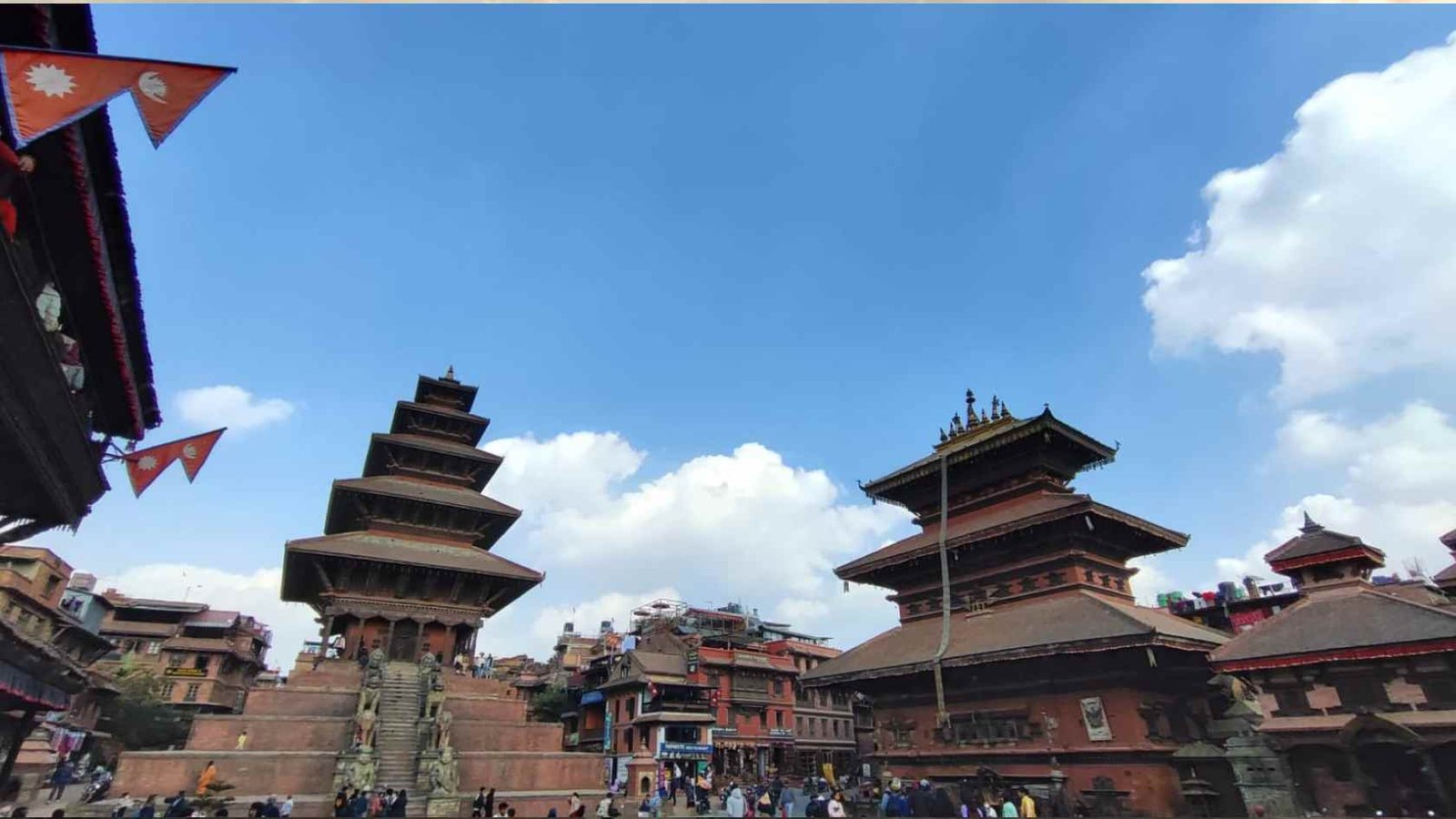


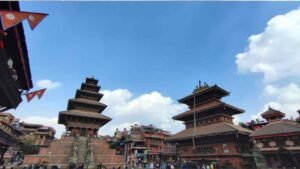
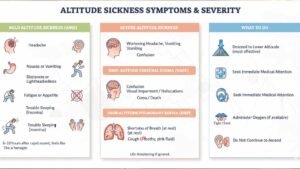
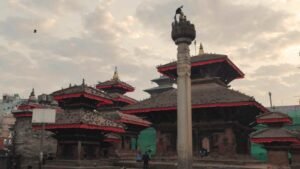
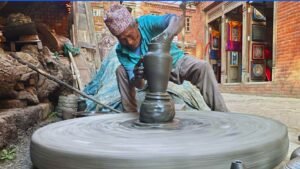
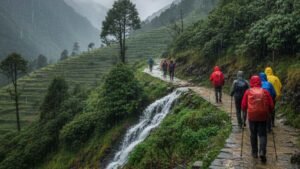
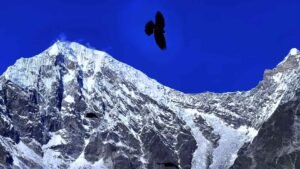
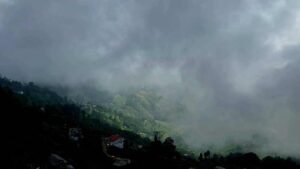

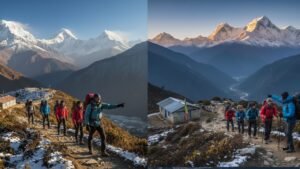
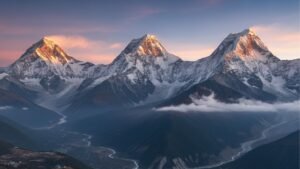
Post Comment